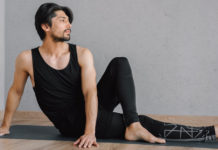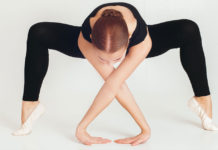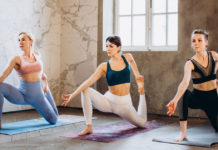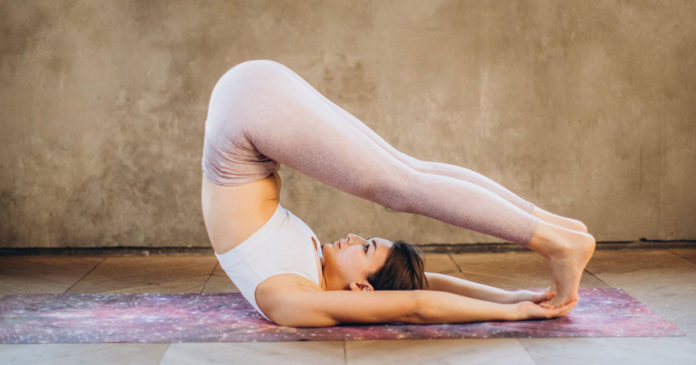Introducing the vibrant and fluid style of vinyasa yoga to the globe. One of the most well-liked yoga forms nowadays is vinyasa yoga, also referred to as vinyasa flow.
What is vinyasa yoga? Vinyasa yoga combines breath and movement synchronization to create a fluid transition between poses. With this approach, which places an emphasis on the relationship between breathing and movement, practitioners may experience meditation in action.
Because Vinyasa Yoga has so many different sequences and variants, practitioners of all skill levels may benefit from it. There is a Vinyasa pattern that can be customized to fit your needs and objectives, regardless of your level of expertise.
What is vinyasa yoga?
Vinyasa Yoga invites practitioners to experiment with various postures and transitions because of its focus on flexibility and creativity. This enables flexibility and individual expression within the practice.
We will go more deeply into the tenets and advantages of vinyasa yoga in this part. We’ll look at a variety of yoga poses that may improve your flexibility, strength, and awareness. As we go out on our adventure into the realm of knowing what is vinyasa yoga, prepare to flow through your breath!
Philosophy and Principles
Vinyasa yoga is an energetic, flowing form of yoga that highlights the relationship between movement and breath. Vinyasa yoga transforms its adherents into a philosophical community that seeks to establish a state of equilibrium among the respiration, body, and mind.
A key idea in vinyasa yoga theory is “breath-synchronized movement.” Every action in this exercise corresponds to a certain breathing rhythm. Through the meditative flow that this synchronization produces, practitioners may develop attention throughout their practice.
If you do vinyasa yoga and link your breath to your movements, it improves not only your physical experience but also your mental and spiritual ones. As they go from one posture to the next, it invites practitioners to be totally present in the moment and mindful of their breath.
Vinyasa yoga places a strong emphasis on mindfulness. It asks practitioners to simply and objectively notice their thoughts and feelings. Those who practice mindfulness may become more self-aware and peaceful within by focusing on the present moment via their breathing and movement.
In conclusion, the foundational ideas of vinyasa yoga center on cultivating attention and accepting breath-synchronized movement. By means of this practice, people may cultivate their general well-being while delving into the fundamental relationship among body, mind, and breath.
The Physical Benefits of Practicing Vinyasa Yoga
There are many physical advantages to vinyasa yoga practice that might improve your general health. More flexibility is one of the main benefits. By facilitating the elongation and stretching of muscles through the sequences of flowing poses, Vinyasa Yoga enhances range of motion and simplifies daily activities.
What is vinyasa yoga? Vinyasa Yoga emphasizes strength development in addition to flexibility. Over time, the varied postures’ dynamic motions and holds work different muscle areas, improving physical strength and endurance. This helps you avoid injuries and improves your physical performance.
To further enhance cardiovascular health, Vinyasa Yoga is a fantastic practice. Deep breathing and a steady stream of motions raise heart rate and promote blood circulation. Improved cardiovascular endurance and general heart health may result from regular practice.
What is vinyasa yoga? It’s crucial to remember that Vinyasa Yoga offers much more than simply these tangible advantages. In addition to its physical benefits, this technique encourages emotional equilibrium, stress reduction, and mental clarity.
What is vinyasa yoga? Vinyasa Yoga may thus be a beneficial addition to your workout regimen for both your body and mind, regardless of your fitness goals—whether you want to enhance cardiovascular health, develop flexibility, or build strength.
The Mental and Emotional Benefits of Vinyasa Yoga
The mind and feelings are also deeply affected by vinyasa yoga. This dynamic exercise has many mental and emotional advantages because of its coordinated breathing and flowing movements.
The capacity of vinyasa yoga to lower stress is one of its main benefits. The practice’s attentive aspect aids in promoting relaxation, releasing tension, and calming the nervous system. You create a place where tension may dissolve as you intentionally go through each posture and pay attention to your breath.
Increased mental clarity and attention are two more important benefits of vinyasa yoga. You have to focus and remain in the present time since the poses flow continuously from one to the next. This develops awareness, which may be applied to activities outside of the gym.
Additionally, vinyasa yoga fosters emotional equilibrium by bringing the body and mind into harmony. A relaxation response that aids in emotion regulation is triggered by the rhythmic movements and deep breathing, which also activate the parasympathetic nervous system. Better mood stability and general wellbeing may result from this.
In essence, the engagement in vinyasa yoga not only enhances physical strength but also fosters mental and emotional wellness. This vibrant style of yoga provides a comprehensive method of self-care that surpasses mere physical exertion, as it alleviates tension, improves concentration, and fosters emotional equilibrium.
Understanding the Vinyasa Flow: Sequences and Asanas
Yoga’s energetic and well-liked Vinyasa Flow style emphasizes coordinating breath and movement. This segment will delve into the various sequences and asanas that are frequently employed during the practice of Vinyasa Flow as well as what is vinyasa yoga.
The Sun Salutations, or Surya Namaskar, are one of the basic sequences of Vinyasa Flow. This sequence is made up of many positions that blend together to create a beautiful and energetic movement. Starting a Vinyasa session with Sun Salutations helps the body warm up and establish a connection with the breath.
Sun Salutations are only one of the numerous asanas or postures that are often included in Vinyasa Flow practice. These include standing postures that promote stability and strength, such Triangle, Warrior I, and Warrior II. Poses that require balance, like Eagle or Tree, test one’s ability to concentrate both mentally and physically.
In addition, sitting positions such as the Pigeon pose or the Seated Forward Fold provide chances for extended stretches and releases. For those looking for an additional challenge, inversions like headstands and handstands might be introduced.
What is vinyasa yoga? If you know these vinyasa flow patterns and basic asanas, you’ll be able to do your practice with ease and trust. Now let’s get started!
Tips for Beginners: How to Start Practicing Vinyasa Yoga Safely and Effectively
How can I begin practicing Vinyasa yoga safely and successfully if I’m new to the practice? You need not be concerned, as we have compiled some useful advice to assist you in commencing your Vinyasa practice.
It’s crucial to locate a skilled teacher or enroll in a beginner’s program first and foremost. The assistance of these individuals can ensure that you practice in a secure manner and prevent potential injuries by directing you through the correct sequencing and alignment of poses.
It’s important to pay attention to your body’s limits as a beginning. As you gain strength and flexibility, start with little exercises and work your way up. Avoid exceeding your physical capabilities; instead, the goal of yoga is to achieve a harmonious equilibrium between exertion and relaxation.
Throughout the exercise, pay attention to your breath. Vinyasa yoga is well-known for emphasizing the connection between movement and breath. This keeps you rooted in the here and now and facilitates the flow of meditation.
Invest in a high-quality yoga mat that will provide support and stability while you practice. This will make everything more enjoyable for you and avoid any pain or sliding.
Finally, as you set out on your new path, practice self-compassion. Just as Rome wasn’t created in a day, your yoga practice won’t become flawless quickly. Savor the process of using Vinyasa yoga to discover, explore, and strengthen your connection to yourself.
What is vinyasa yoga? Keep in mind that everyone begins as a novice at some time, therefore welcome this phase of development with an open heart and mind!









